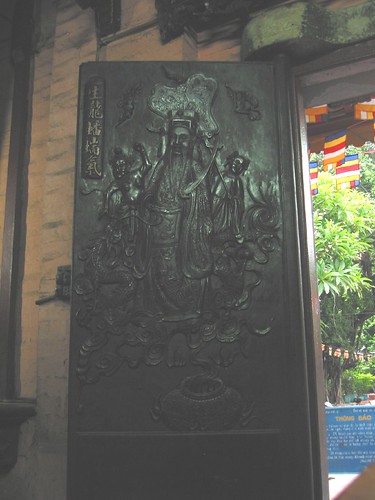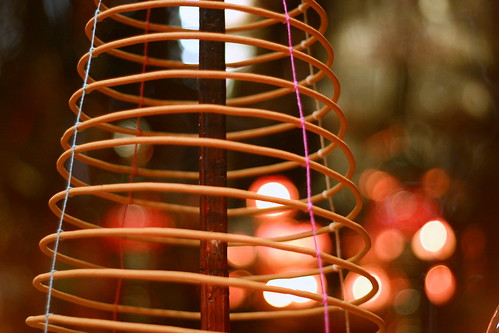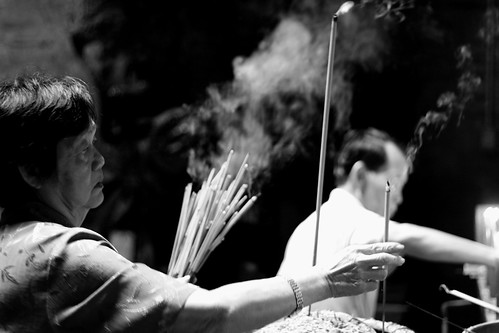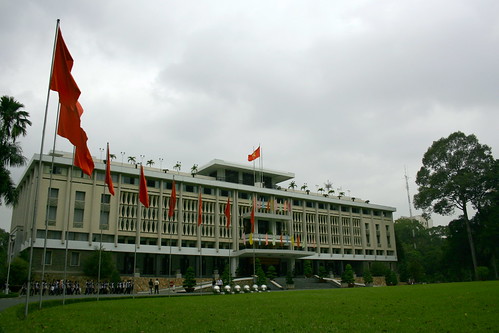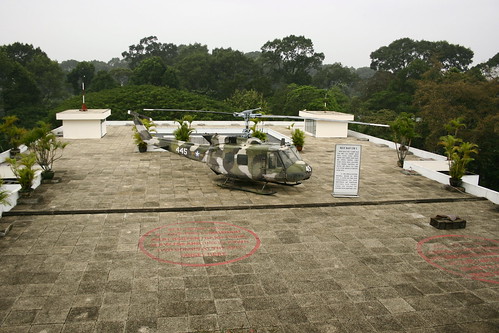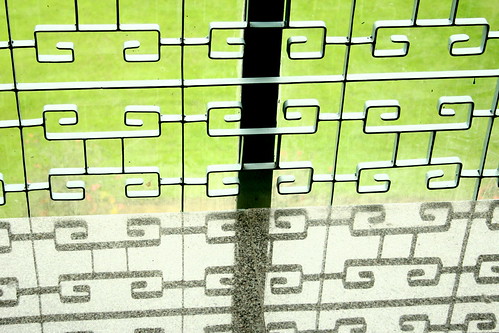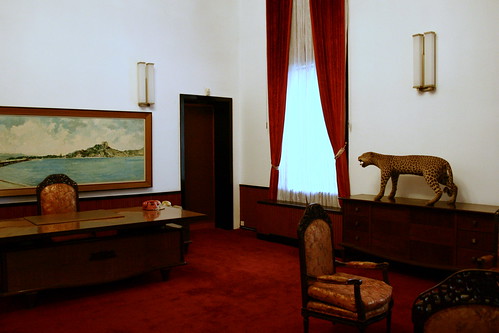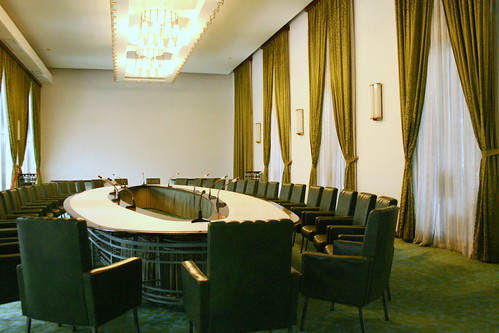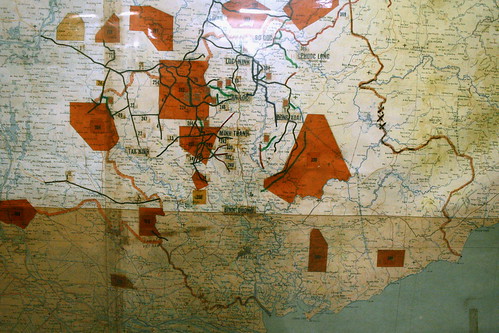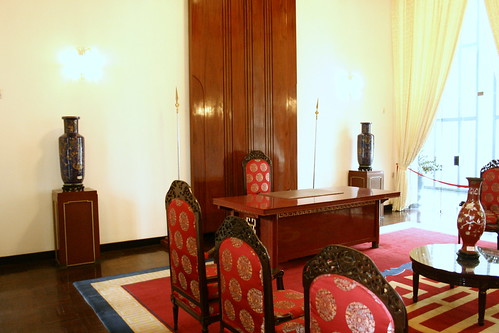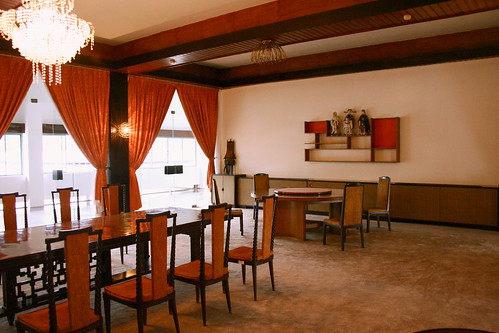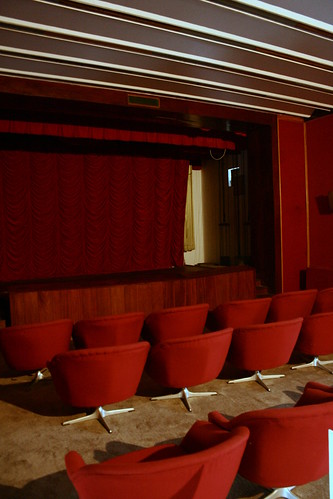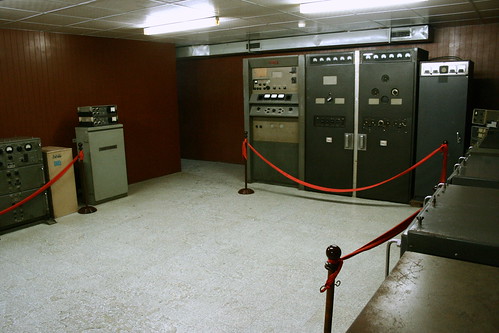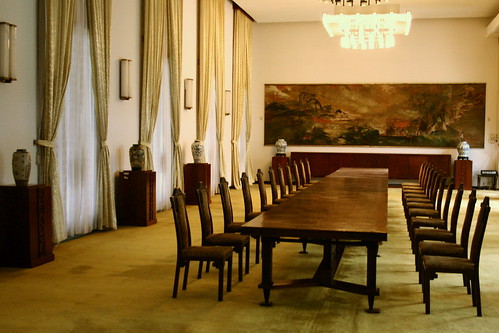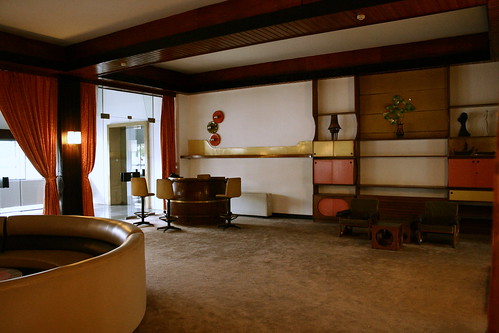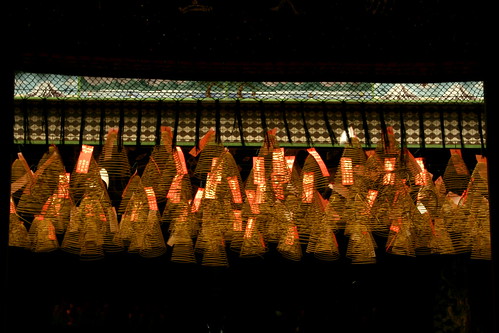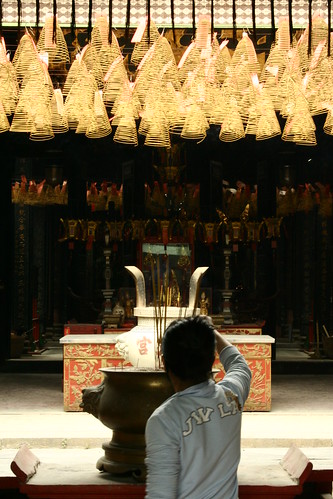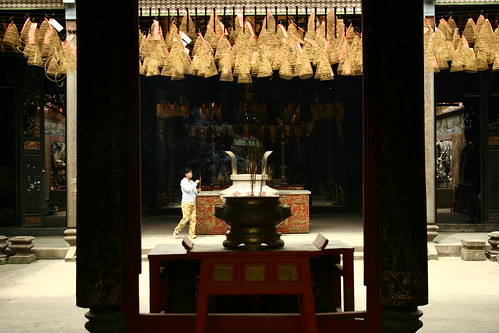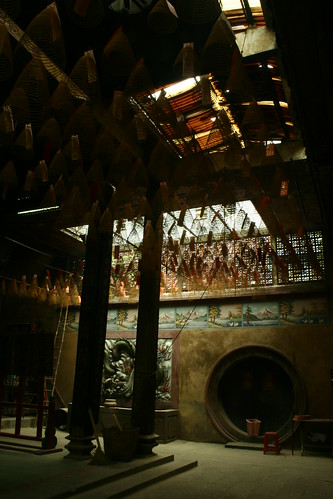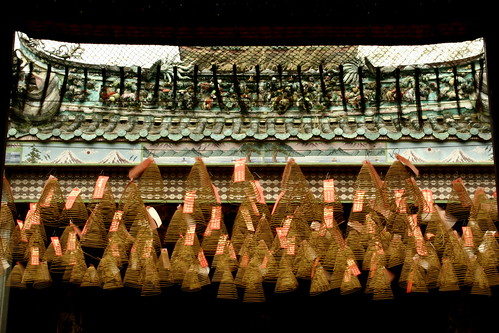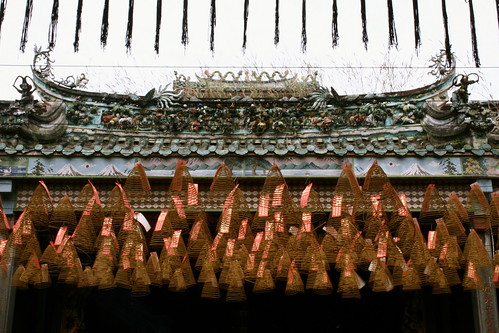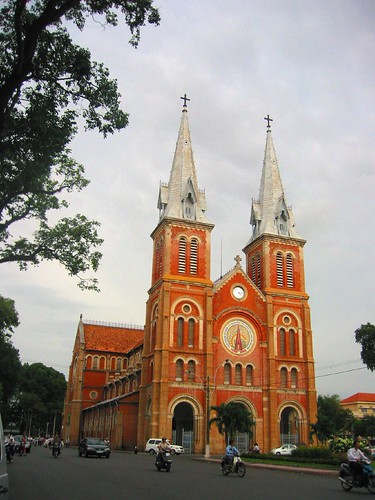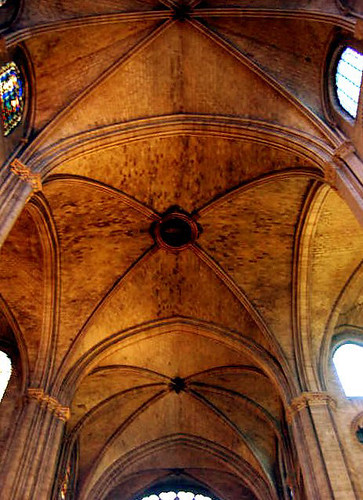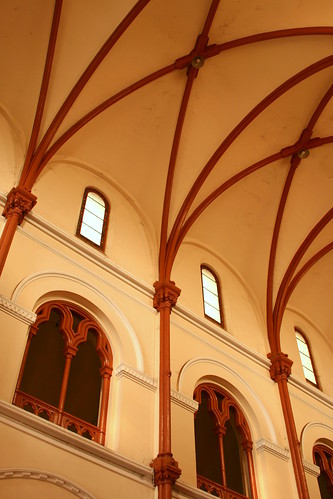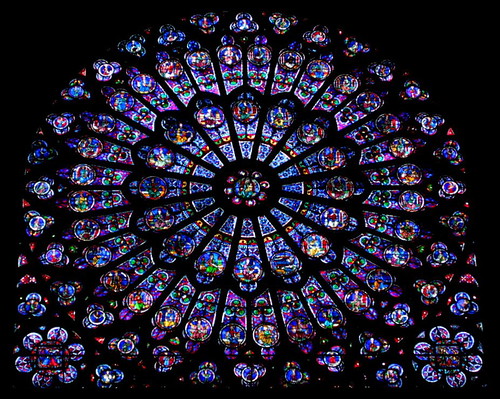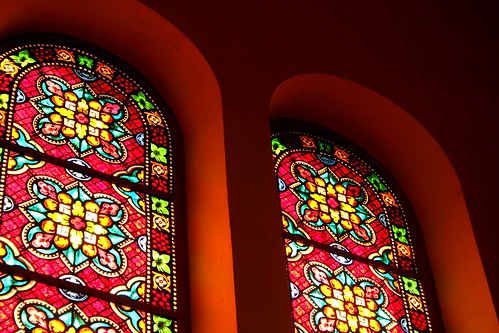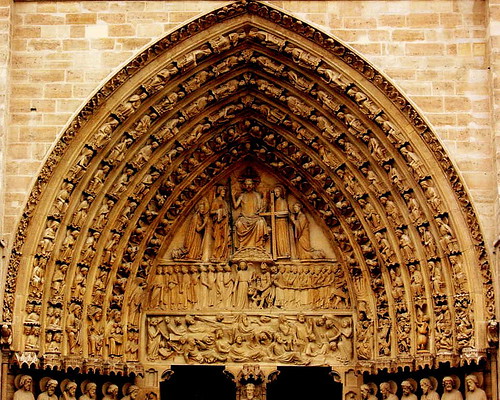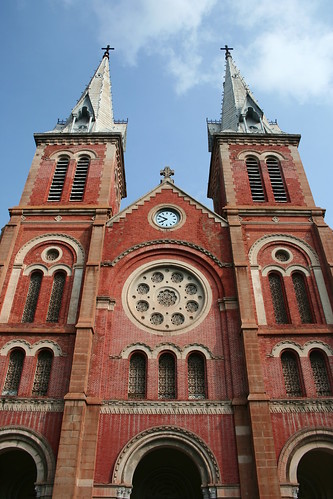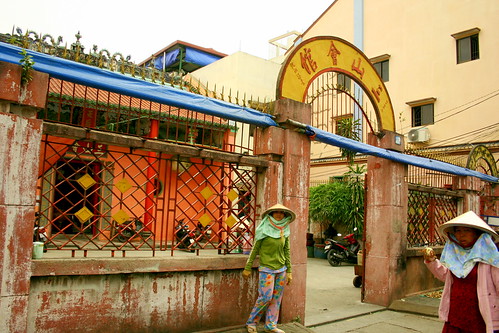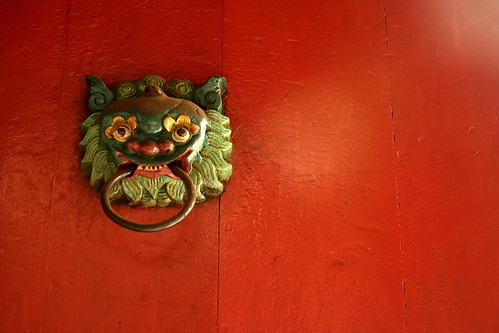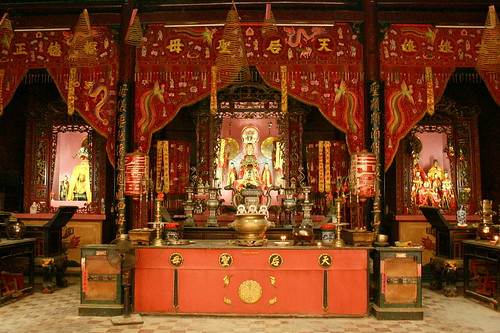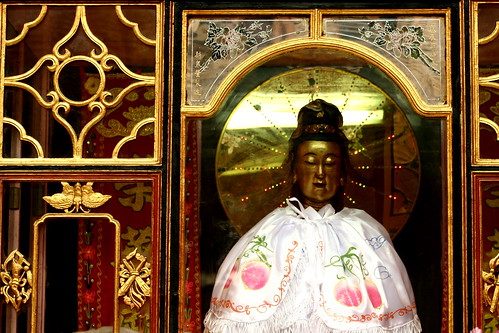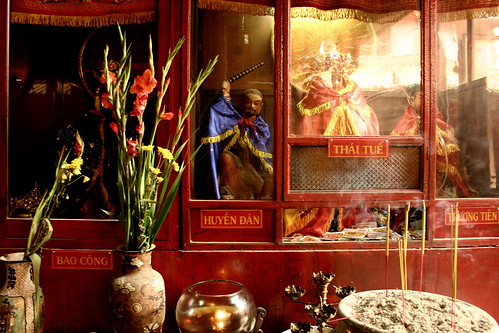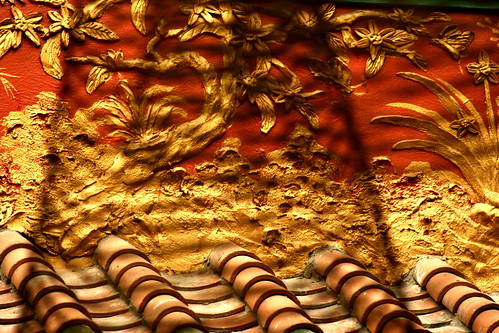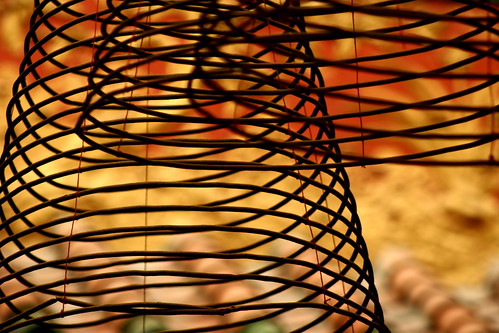Every country has a cuisine that stands above all others and for the Vietnamese, considered the best is Hue. In concept, Hue cuisine is classified into two- traditional Hue and Royal Hue. Both are renowned for their demand for culinary precision and esthetics in presentation but the royal version is recognized as rigid and inclusive, banned from commoners and reserved only in the palace.
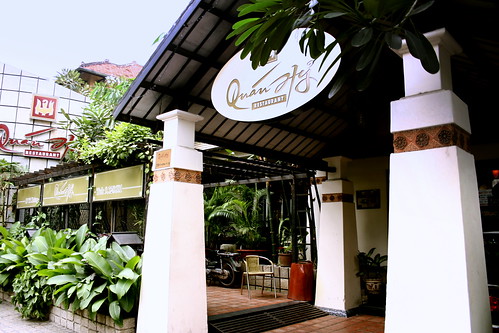
massive pillars announce the presence of Quan Hy
Canon EOS 350D Digital, 1/50s, f/4.5, 33mm, ISO 800, +1/3EV
The art of traditional Hue cooking is brandished with flair in Quan Hy restaurant. Interestingly, the Ho Chi Minh branch only is a late spin-off of the popular Quan Hy in Westminister, California which opened in 1994.

Dark red hardwood and warm yellows create an embracing and comfortable ambience
Canon EOS 350D Digital, 1/25s, f/3.5, 18mm, ISO 100
Quan Hy was a recommendation of a friend who was having a social meeting with the owner and some other photographer friends in the restaurant. I had some affairs to conduct so after some introductions, I moved to another table with business associates. This did not mean to say that I did not take the time to study the menu and photograph the gastronomic delights.
From the extensive list, I chose a rice cake dish declared as one of their specialties- the “potstickers”. More like the Chinese jiaozi or Japanese gyoza, the banh it ram is a mélange of mushrooms, pork and shrimps ensconced in a thinly rolled piece of rice dough crimped at the edge. Like most Hue dishes, this came with its specific sauce made of soy and vinegar. The dumplings were delicately balanced over a special rice cake that was extra crunchy, a textural foil to the soft dumpling.
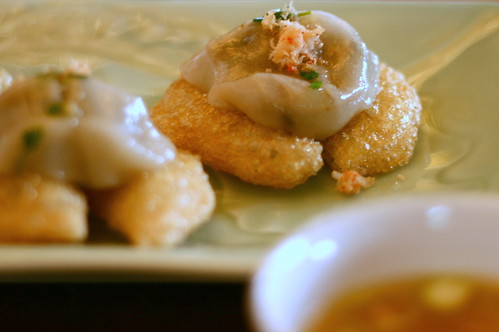
4 banh it ram potstickers - 45,000 (2.6usd)
the banh it ram or stuffed potstickers on crunchy rice cake
Canon EOS 350D Digital, 1/80s, f/1.8, 50mm, ISO 200
The next dish was the banh uot thit bo nuong. Rice rolls are definitely Vietnamese and it was my first time to try them stuffed with grilled beef. The rice paper was freshly steamed and enjoyably sticky. Finger-size, the rolls come with a slightly spicy dip which warmed the palate and complemented the provocative taste of beef.
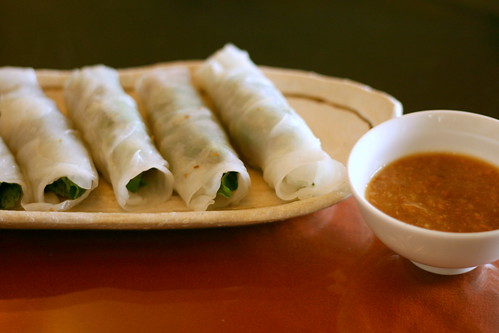
7 banh uot thit bo nuong - 55k (3.2usd)
Canon EOS 350D Digital, 1/80s, f/1.8, 50mm, ISO 200, +1/3EV
banh uot thit bo nuong or beef-stuffed rice rolls
As a crustacean fanatic, I did not miss out on the cha gio tom cua which are springrolls stuffed with crab and shrimp. They came in tiny 1 ½ inch squares which bulged with plump and juicy crabmeat. Accompanied with fresh julienne slices of cabbage, carrots and aromatic leaves, the springrolls came with a mouth-watering fish sauce spiked with hot chili. Hands down, this became my favorite of all the dishes I had.
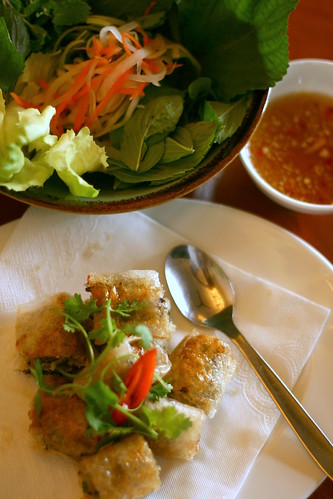
Canon EOS 350D Digital, 1/125s, f/1.8, 50mm, ISO 200, +1/3EV
A distinguishing feature of Hue cuisine is the visuals. The flourish of colors could be vivid, or as in the case of the salad that we had, discreet. More like what the Japanese often do, the greens are tempered with warm browns or yellows and there is always a touch of red or orange. But past the color palette, the goi hen is a clear Southeast Asian inspiration- fresh manila clams, bean sprouts, peanuts, minty leaves over crunchy round rice crackers.
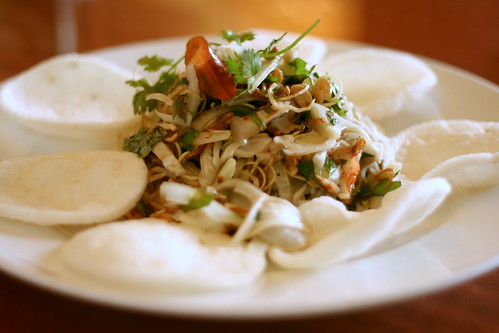
goi hen, a clam salad with mixed vegetables, peanuts and crunchy rice paper
Canon EOS 350D Digital, 1/60s, f/1.8, 50mm, ISO 200, +1/3EV
The final dish was the omnipresent bun nuoc noodle soup. Not surprisingly, again, I picked the version with crab and shrimps. Simmering hot, the noodle soup combined the hearty umami flavor of seafood meat and sultrily glutinous stickiness of starchy rice. I am no noodle follower, but the shellfishes were divine.
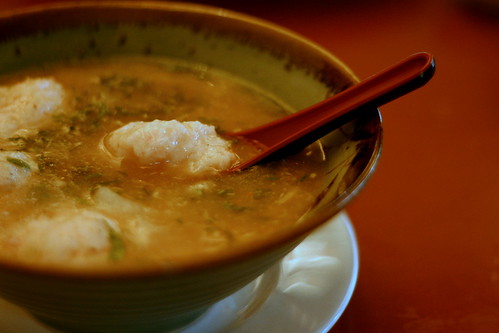
37 banh canh tom cua - 50k (2.9usd)
banh canh tom cua, a white glue noodle soup with crab meat and shrimp
Canon EOS 350D Digital, 1/100s, f/1.8, 50mm, ISO 800
True to its name – Quan Hy means “happiness” – the restaurant delivers the beauty, aroma and taste that one can only expect of a cuisine associated with Hue.
Quan Hy Restaurant, 15-17-19 Ton That Thiep, Ward Ben Nghe, Distric 1, Ho Chi Minh City, Vietnam, tel +848 39141552, www.quanhyrestaurant.com


